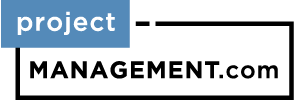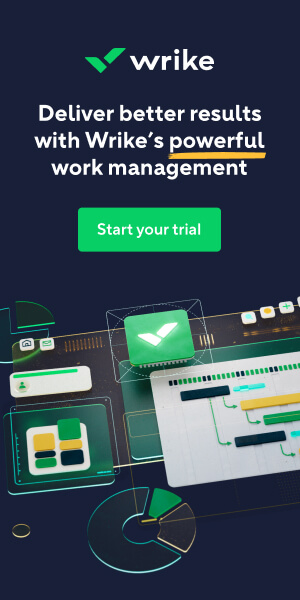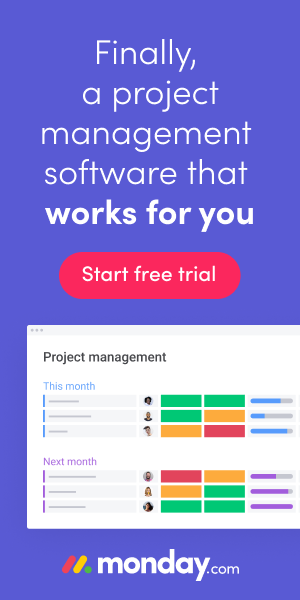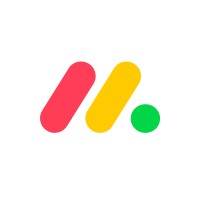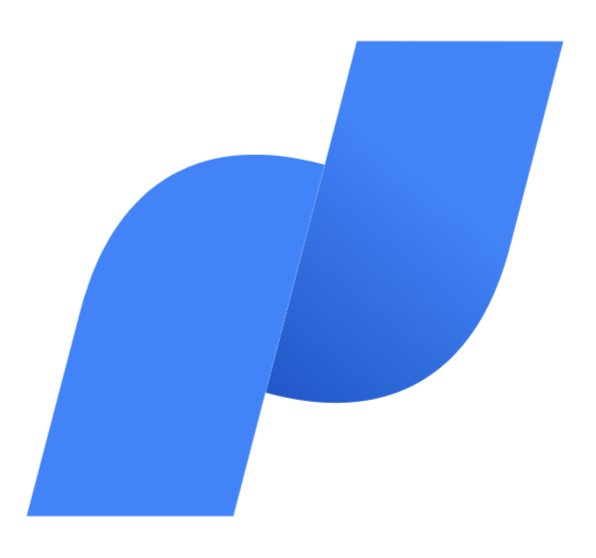Agile software development is the process of combining new ideas and existing improvements to solve the problems of more traditional software development methods and practices. Its iterative approach focuses on promoting collaboration between the team and the customer; empowering people to reflect, learn, and adjust at regular intervals; and integrating planning with execution to respond effectively to changes. To make the best use of agile methodology, your team may want specialized PM software and tools.
Table of Contents
- What Is Agile Software for Project Management?
- Top 10 Agile PM Software & Tools
- Types of Agile PM Software & Tools
- Agile PM Software Features
- Features for Small Business
- Features for Midsize Business
- Features for Enterprise Business
- Ready to Try Agile Software for Project Management?
What Is Agile Software for Project Management?
Teams adopt an agile framework for their software development projects so they can maintain a work pace that promotes velocity and adaptability. Agile project lifecycles have several iterations, or incremental tasks that build towards a complete project. Agile PM software are tools that support this iterative process, and are not limited to software projects. Agile tools support frameworks like Scrum.
Top 10 Agile PM Software & Tools
Teams that approach a project using agile need software that allows them to manage their projects incrementally throughout its lifecycle. With the proven benefits of agile software development, teams can apply agile values, principles, and practices to other lines of work. Here is a list of the top agile project management tools and software that allow teams to plan sprints, prioritize backlog, delegate and track tasks, collaborate easily with all stakeholders, measure performance, and get up-to-date reports — all with increased transparency and flexibility.
monday.com

monday.com is a flexible online PM software that helps project teams deliver better and faster results. It allows them to break down large projects into more manageable tasks and manage them with an iterative approach. monday.com supports collaboration of cross-functional teams so customers, product owners, and agile teams can all work together using a board view. Companies use this agile tool for tracking software bugs, planning sprints, and launching products with customization and support for various agile methods such as Scrum.
Smartsheet

Smartsheet empowers project teams to respond to change and deal with uncertainty using agile. It improves collaboration and increases work velocity by providing tools that range from simple task management to complex resource and portfolio management. Teams can report on key metrics and get real-time visibility with features that include roll-up reports, dashboards, and automated workflows. Smartsheet also has core PM features for creating project plans and schedules, tracking tasks and budgets, holding discussions, and storing searchable data to keep the team connected and informed.
Wrike

Wrike is a robust agile PM software that empowers teams to perform continuous delivery and execute sprints faster. Built-in collaboration tools enable teams to share files, tasks, and reports instantly. A shareable Kanban board helps teams easily assign work to project and task owners and organize tasks by due date. Wrike offers an agile teamwork template that allows teams to prioritize a backlog for planning, manage sprints with boards, and track progress using reports. The software provides dashboards to increase visibility across teams, an activity stream with live feed of all project updates, and dynamic work-intake forms.
Asana

Asana enables teams to manage agile projects, move quickly, and get better results. It has flexible and collaborative tools for planning, organizing, and managing agile projects and Scrum sprints. Features such as boards, timelines, custom fields, and dependencies make Asana a valuable agile PM software to track launches and iterations, simplify sprint planning, and communicate with teammates. It can help both agile and non-agile teams adopt agile processes into the organization without prescribing a specific method. The software can translate agile concepts, applying it to bug tracking, product feedback, product roadmaps, or work requests.
ClickUp

ClickUp is a free all-in-one PM software that agile teams can use. Teams can plan their sprints and keep backlogs organized in a single platform. It is a flexible software ideal for bug tracking, sprint management, and product launches. ClickUp has customizable dashboards to build burndown and burnup charts. Teams can also use cumulative flow diagrams to monitor the status of progress, and use a velocity chart to anticipate the completion rate of tasks. Other features include a customizable sprint point system, syntax highlighting, and Git integrations.
Planview LeanKit

Planview LeanKit enables organizations and teams to visually track the flow of work with enterprise Kanban boards. LeanKit enables agile process and work visualization with flexible boards, so agile teams can easily model workflow processes. The drag-and-drop interface and custom categorization labels provide real-time work status. Team leaders can set work-in-process limits on lanes and create cross-team work connections that visualize parent-child relationships. Other features include customizable board layouts, templates, card comment threads, @mentions, card attachments, built-in metrics, and reporting.
Read our complete Planview review.
Jira Software

Jira Software is an agile PM tool ideal for software teams. It supports multiple methodologies for software development, so organizations can use a single platform for their Scrum, Kanban, hybrid, and agile-at-scale implementations. Software features such as agile boards, backlogs, roadmaps, and reports, as well as integrations and add-ons, all help teams release software faster. Jira Software provides tools for sprint planning so teams can manage versions, prioritize backlogs, estimate stories and epics, and track points. The software also has sprint permissions, custom issue types, and various agile reports.
ProofHub

ProofHub provides an all-in-one software solution to help agile teams plan, collaborate, organize, and deliver projects of all sizes. Teams can share ideas, compile documents, and hold discussions to incrementally move work forward. ProofHub combines all the tools needed for both agile and traditional project management such as table, board, and Gantt chart views, as well as task management and custom workflows. Teams collaborate effortlessly with built-in proofing tools, chat, @mentions, and email integration. It also has project and resource reports, timesheets, notifications, and integrations.
Learn more about ProofHub’s pros and cons.
Kanbanize

Kanbanize is software for agile project management. Teams are able to visualize their project plans in dedicated management boards. As teams complete work, progress and potential risks are all visible, promoting transparency that helps planning align with day-to-day execution. Kanban boards provide at-a-glance information that help identify blockers and bottlenecks. Kanbanize lets teams manage dependencies across multiple projects, create data-driven delivery forecasts using analytics, and collaborate.
Read the complete Kanbanize review.
Zepel
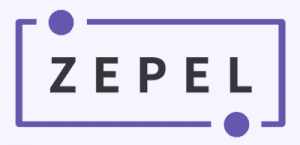
Zepel is an online tool for agile software development that enables teams to track their entire development process. Unlike issue-tracking tools, Zepel lets teams build and track customer-focused products. Zepel has boards, sprints, and agile reports for easier development process collaboration. Developer handoff tools facilitate grouping of requests and errors from multiple sources, as well as prioritizing and delegating requests. Other features include feature management and planning, drag-and-drop prioritization, attachments, dependencies, Kanban, and APIs.
Types of Agile PM Software & Tools
Agile project management tools enable different teams across an organization to develop products, manage projects, and deliver results quickly at a sustainable pace. Most of these tools are customizable to fit a team’s unique workflow, highly visual to promote transparency, and collaborative to facilitate interaction among stakeholders.
Framework-Specific
Agile tools and software can be framework-specific, such that it supports one agile framework only. This type of software can specifically support only Scrum, or only Kanban, or only XP, or only another agile framework. However, more and more agile solutions in the market are adding capabilities to manage more than one type of framework.
Flexible-Hybrid
Most agile PM software are capable of managing several methodologies, including hybrid and custom ones. These software can support one team using Scrum working one sprint at a time, and another team using their own hybrid workflow with custom rules and processes. Customization is an important feature that users can apply to core features such as boards, views, and reports.
Read also: Agile, Waterfall, and Hybrid: Managing the Multiple-Methodology Portfolio
All-in-One
All-in-one PM software are capable of managing both agile and non-agile types of projects. They have a comprehensive set of features that allow organizations to initiate multiple projects that are both traditional-sequential and iterative-incremental types simultaneously. Because of the general PM features included, agile teams may need to perform more customizations for this type of PM software to make it suitable to their workflow and methods.
Agile PM Software Features
The agile software development lifecycle allows development teams to successfully meet the fast-changing needs of customers with the help of its iterative process. Many agile software today support this approach by including essential features to make it easier for teams to adhere to agile practices.
Visualization
Agile teams place greater importance in a working product over documentation. Agile tools that provide visual solutions help teams get information quickly, so they can spend more time working on tasks. Visualization also promotes transparency, enabling each team member see individual progress and overall team progress. Teams can spot where in the process they are slowing down or getting blocked and work out a solution quickly. Visualization tools also provide a variety of task views for different perspectives.

Issue Tracking
After every iteration, agile teams add one or more features to a working product. Teams need to track and resolve all issues that prevent a product or service from working properly. Issue tracking in agile software also provides input to a team’s priority or backlog, so they can allocate resources to solve issues that require immediate attention.
Communication and Collaboration
Agile software development puts great emphasis on the collaboration and interaction between the project team and the customer. Communication tools ensure customers actively participate in every phase of the project, providing answers to questions, feedback to suggestions, and approval to proposals. Collaboration features simplify client access to files, wireframes, mockups, or prototypes.
Estimation
Agile teams use different estimation tools to help plan for their iteration, sprint, or release. Agile project management tools can include features that assign point values, helping the team calculate task length, complexity, and priority. This feature also helps teams compare estimated and actual performance to be more accurate in their forecasting.

Task management
Task management, usually in a board view, is essential for an agile approach. Whether a Scrum board or a customized workflow board, agile teams need visibility of task assignment, progress, and completion. Teams break down large projects and execute their delivery in small but frequent increments, so it is important that project leaders manage, monitor, and track tasks for each team member.
Reporting
Agile teams measure different metrics depending on the framework they follow. Agile tools should have common reports pre-built, while allowing customization. Some of these common reports include burndown charts and velocity reports for Scrum teams, or WIP and lead and cycle time for other teams.
Workflow management
Processes are still important in agile teams to achieve a working product. However, teams are more flexible in how they apply processes in workflows. Teams divide their project boards into several columns and add tags, filters, and swim lanes to define how the work flows from one state to another.

Time tracking
For agile teams, responding to change is more important than following a plan. But agile teams also value continuous improvement. To help them measure and improve their performance, they need to track time and other metrics. This feature provides data such as how fast individuals can complete tasks, or how much time the team needs to build certain features.
Features for Small Business
Agile is for business of all sizes — including small businesses. Agile project management tools can help a small business with few resources use those resources more effectively. Some of the software features important for small businesses are:
- Collaboration: It is typical for small businesses to use external entities, such as contractors, in addition to internal teams. To ensure everyone is working towards the same goals, everyone needs to be communicating clearly and frequently. Also, they should all have easy access to project documents.
- Task Management: A small business can break down large projects and distribute them to different teams. The teams can then work in increments, one after the other or simultaneously, towards the final deliverable.
- Time Tracking: Time tracking features help businesses measure project efficiency. Small companies can make use of the information to improve estimation and work performance.
Features for Midsize Businesses
Midsize businesses can adopt agile tools to grow their customer base. As a result, agile teams can complete products and respond to requests in shorter time.
- Visualization: Midsize businesses, especially today, are often using a hybrid workforce of in-office and remote teams. Visual task boards can easily show what each team member is working on, no matter where they’re based.
- Workflow management: With a bigger team, companies can take advantage of workflows to help agile teams follow best practices and still allow them to customize for variations unique to the project, team, or location. Boards with customizable columns or statuses also give project teams a way to react fast in order to respond to changes from the customer, work situation, or other external factor.
- Collaborative workspace: A midsize company can handle more projects and will produce more data. Teams need to have access to a collaborative workspace where they can easily search and access important information compiled by several cross-functional teams.
Read more: How to Build and Manage a Remote International Team
Features for Enterprise Businesses
Agile is not easily adopted in larger companies. But new frameworks and models are allowing enterprise businesses use agile development more successfully, such as in how they plan their strategies, manage portfolios, and improve their operations.
- Visual reporting: Agile PM software with visual reporting and dashboards can provide clarity that is harder to find in larger teams and companies. Summarized reports and interactive dashboards can give project teams information on how work is progressing and allow them to be more efficient with time and resources.
- Workflow management: Enterprises that have been working with legacy and more traditional processes can gradually adjust to agile practices with the help of customizable workflows. This feature can help large businesses move at their own pace and ensure continuity of operations as they shift to a more agile mindset.
- Collaboration: Collaboration tools enable different teams, departments, business units, and regional offices to communicate clearly, agree on priorities, and understand the timeframe project teams are working on. In the absence of face-to-face meetings, agile software should include or integrate easily with video conferencing tools.
Read more: Project Management Office (PMO) Meaning
Ready to Try Agile Software for Project Management?
More companies are implementing agile methodology outside the software development industry. Agile is a flexible and adaptable approach that improves the quality of products, performance of projects, and satisfaction of customers. With the right agile PM software, businesses can implement agile alongside other project methodologies and even develop their own unique workflow.
